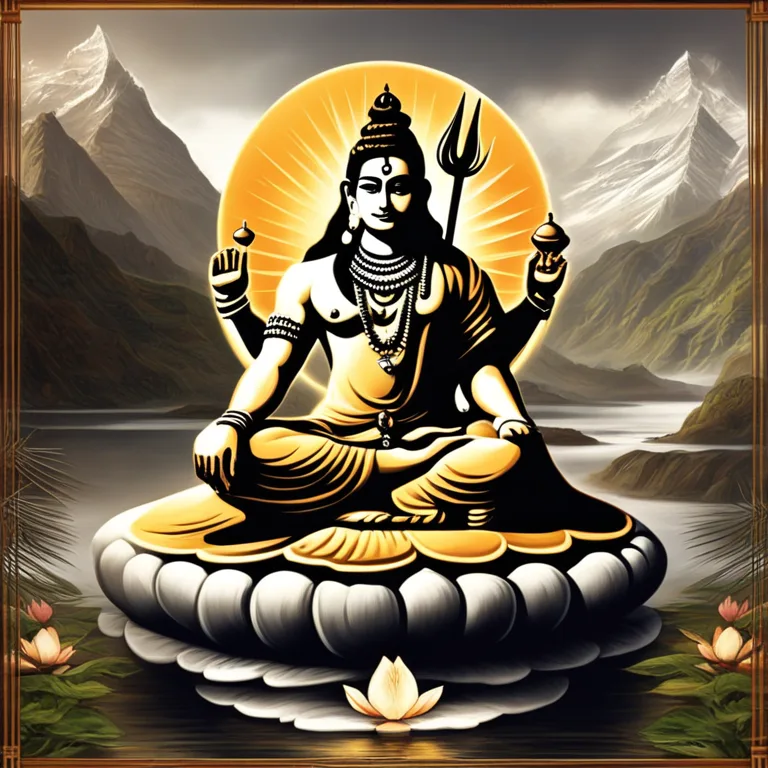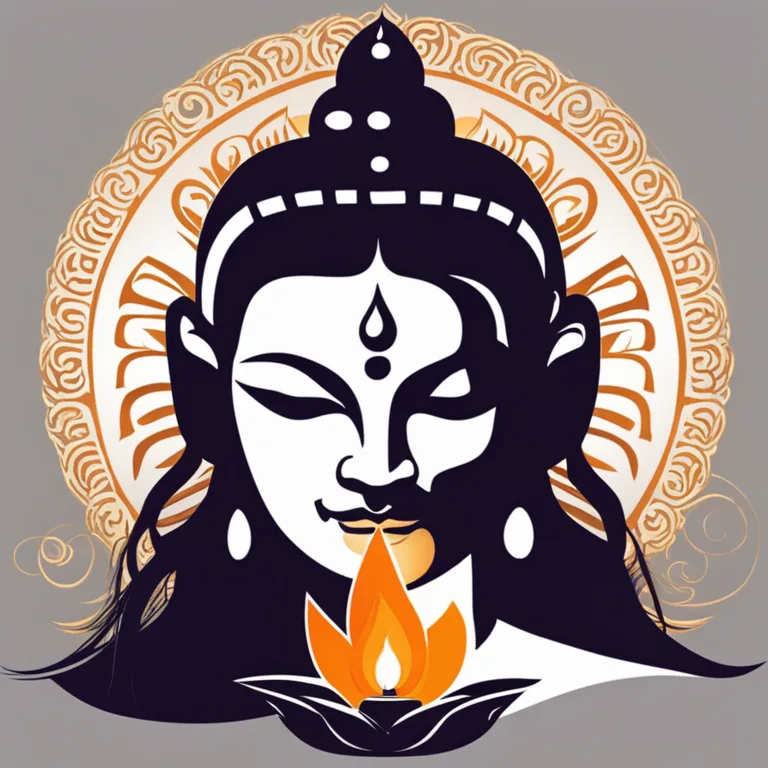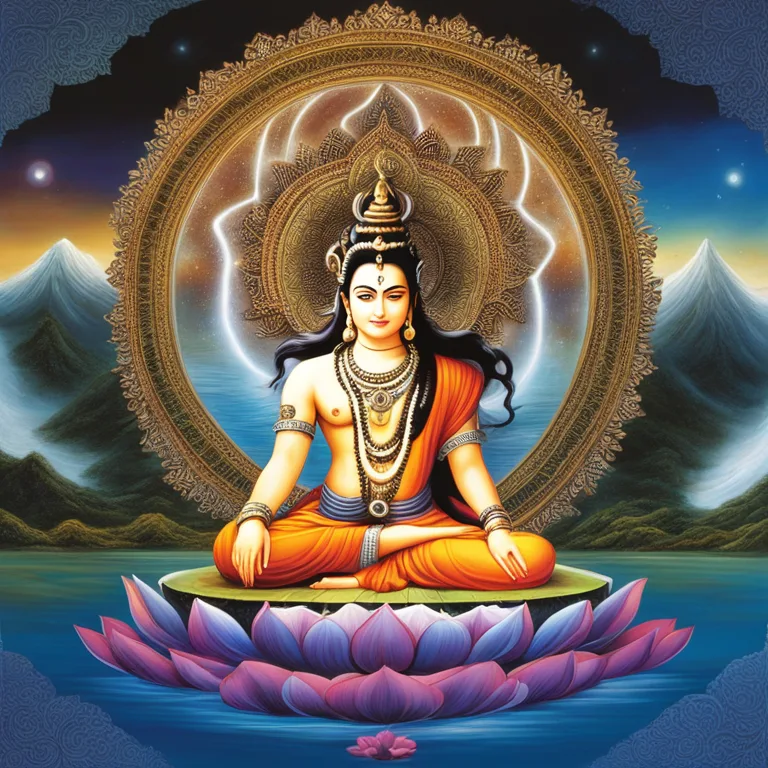
Shiva's Meditation Techniques & Insights
Delve into ancient meditation practices inspired by Lord Shiva to find inner peace and enlightenment.
article by Hina Kurosawa
Origin of Shiva Meditation
When we speak of meditation in the context of Lord Shiva, it's essential to understand the mythological and cultural origins of this practice. Shiva, one of the principal deities of Hinduism, is often depicted in deep meditation, seated on Mount Kailash. In the yogic tradition, Shiva is not just a god, but also the first yogi or Adiyogi, who imparted the knowledge of yoga to the Saptarishis, the seven sages. It is said that the practices he revealed contain the seed of spiritual awakening, which is why they have been revered for millennia. Followers believe that through Shiva-inspired meditation, one can tap into the reservoirs of tranquility and wisdom that Lord Shiva represents. This meditation form is more than a practice; it's a journey towards inner cosmos and understanding the universe within.Your FirstKeyword, SecondKeyword, ThirdKeyword, etc.

Principles of Shiva Meditation
Shiva meditation, also known as Shiva Dhyan Yoga, is built upon the principles of concentration, stillness, and breath. It emphasizes the stilling of the mind and the recognition of our inner self as part of the cosmic dance of creation and destruction. Practitioners seek to silence their thoughts and focus on the eternal om — the sound of the cosmos — which, according to Hindu belief, resonates within every being. The goal is to dissolve the ego and reunite with the divine consciousness that Shiva embodies. Understanding and harnessing the power of these principles can be transformative, leading to profound peace and an enlightened perspective on life's transient nature.Your FirstKeyword, SecondKeyword, ThirdKeyword, etc.

Meditation Postures
An integral aspect of meditation techniques is posture. While Shiva is often seen in the lotus position, what truly matters is maintaining a pose that is comfortable yet alert. This could be the simple crossed-legged position, known as Sukhasana, or a more complex one like Padmasana, depending on one's flexibility and comfort level. The spine should be kept erect with a gentle curve at the lower back. Hands can be placed in the 'Dhyana Mudra' — right hand on left, thumbs touching gently to form a circle — symbolizing the wheel of dharma or cosmic law. The eyes can be closed or fixed on an object to aid concentration. The right posture sets the stage for a deeper and more fulfilling meditative experience.Your FirstKeyword, SecondKeyword, ThirdKeyword, etc.

Focus on the Breath
Breathing techniques, or Pranayama, is central to unlocking the potential of Shiva meditation. The ancient 'Trataka' method, where one focuses on the breath while staring at a single point, often the flame of a lamp, can improve concentration dramatically. This gaze should be maintained without blinking as long as comfortably possible to strengthen the eye muscles and enhance focus. When the eyes close naturally, one directs their attention inward, observing the flow of breath. Shiva's meditation teaches that control over breath leads to control over the mind, inviting a state of deep meditative absorption known as 'Samadhi'.Your FirstKeyword, SecondKeyword, ThirdKeyword, etc.

Chanting Om Namah Shivaya
A sacred mantra associated with this form of meditation is "Om Namah Shivaya," which is central to the Shaivism tradition. It translates to "I bow to Shiva," a homage to one's inner self and the lord. Repetition of this mantra is said to cleanse the soul and bring forth unity with Shiva’s energy. As one becomes absorbed in the vibration of the mantra, it can alleviate the 'noise' of everyday life and foster the clarity required for deep meditation. Chanting aligns the individual's energy with the cosmic, creating a vibrational match to the frequency of universal consciousness.Your FirstKeyword, SecondKeyword, ThirdKeyword, etc.
Integration with Yoga
Integrating Shiva meditative practices with yoga offers a harmonious blend of physical and mental disciplines. Asanas or postures, when performed with intention and awareness, prepare the body for prolonged meditation. Sequences like the Surya Namaskar (Sun Salutation) or Shiva Rea's Prana Flow can invigorate the practitioner before settling into stillness. Furthermore, the philosophies interwoven in yoga and Lord Shiva's teachings - such as Sat-Chit-Ananda (truth-consciousness-bliss) - serve as guiding principles for living and for transcending the limitations of the mind and body.Your FirstKeyword, SecondKeyword, ThirdKeyword, etc.
Published: 12/20/2023
Modified: 12/20/2023
More predictions
Come back here soon to learn more about yourself and your future


Unlocking Meditation Techniques
Discover various meditation techniques to enhance mindfulness and spiritual well-being. This article introduces a range of practices suitable for both beginners and seasoned practitioners.


Soothing Meditation Practices for Serenity
Discover effective meditation techniques to cultivate a tranquil mind and embrace inner peace in our fast-paced world.


The Best Meditation Techniques
Explore essential meditation practices to enhance your mental well-being and spiritual connection, suitable for beginners and seasoned practitioners.